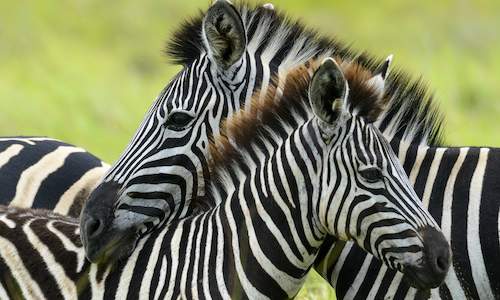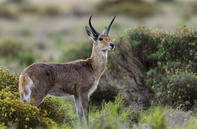
Reedbuck
Name
Reedbuck (Redunca arundinum)
Appearance
The male reedbuck weighs up to 70 kg, has a shoulder height of 950 mm and grows horns up to a length of 450 mm. The ewes are smaller and only measure 800 mm at the shoulders and weigh about 51 kg.
Reedbuck have a grey-brown colour with a white underbelly and a white-tipped bushy tail. The reedbucks of South Africa have a black hairless glandular patch located beneath their ears.
They also have Inguinal glands situated in the groin that secrete a waxy substance to help mark their territory. The rams have one pair of glands, while females have two.
Reedbuck Diet
The reedbuck is primarily nocturnal but will feed during the day under harsh climatic conditions. They are grazers and feed on grass and sometimes herbs found in the bushveld of South Africa.
Reedbuck Breeding
Reedbuck breed throughout the year, however, there is a notable peak in birth rates during the summer in South Africa. Rams become sexually mature after two years, while females can conceive at the age of 15-18 months.
The gestation period for a reedbuck is 225 days, after which a single calf is born. Newborn calves are hidden for the first three months of their lives before joining the herd.
Reedbuck Behaviour
The reedbuck is a very territorial creatures and breeding pairs will defend their territories against other rams. In South Africa, they are seen living in small family units.
When the ewe reaches maturity, she is ousted from the herd, while young males stay within their units for up to three years. The reedbuck is known for the distinct rocking gait run that exposes their underside while in motion.
Reedbuck Habitat
The natural habitat of the reedbuck is wet grasslands. Sadly, this type of habitat has decreased around South Africa, which has caused a decline in reedbuck populations.
Where They Are Found
In South Africa, the reedbuck can be found in the Kruger National Park, the Hluhluwe Game Reserve and a few other game reserves in KwaZulu-Natal. They are also located along the shores of St. Lucia.

Learning about the mammals of South Africa is now so much easier for all South Africans - SouthAfrica.co.za is an excellent source of inform...
more
